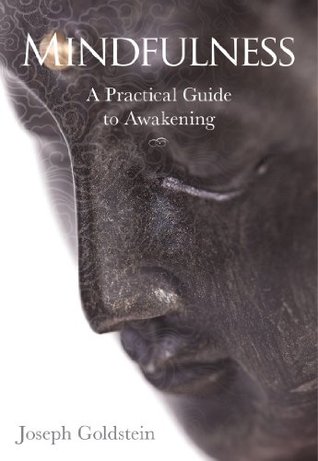More on this book
Community
Kindle Notes & Highlights
Compassion requires both openness and equanimity. It requires learning to let things in without drowning in the difficulties and without being overcome by sorrow. It means learning to simply be with the truth of things as they are. This is the great gift of mindfulness that opens us to compassion. Being with the truth of what is present is what we do every time we open to our own pain or difficulty. As we practice opening to and coming close to the suffering in our own lives with compassion, we then have greater strength and courage to be with the suffering of others.
is important to understand that in situations where it is possible to stop the harmful behavior, we need to take appropriate actions, set proper boundaries, and do whatever is necessary to prevent further harm. But can we do this with a wise attention to our own motivations? Is our motivation anger or resentment? Is it compassion? The great lesson here is that how we feel and respond to the situation is up to us.
“Hatred never ceases by hatred; it only ceases by love.”
May all sentient beings have happiness and the causes of happiness. May all sentient beings be free from suffering and the causes of suffering. My all sentient beings have joy and the causes of joy. May all sentient beings remain in great equanimity, free from attachment and aversion.6
“Bhikkhus, possessing five factors, speech is well spoken, not badly spoken; it is blameless and beyond reproach by the wise. What five? It is spoken at the proper time; what is said is true; it is spoken gently; what is said is beneficial; it is spoken with a mind of lovingkindness.”
When we’re leading basically good and wholesome lives, it is easy to become complacent about our present circumstances. But even under these favorable conditions, we still have many moments when greed, hatred, or delusion arises. We see something beautiful and we want it; our minds are pulled toward it. Or perhaps we see somebody doing something we don’t like, and the mind is suddenly filled with judgment and aversion. Or we may be tired, and the mind simply dulls out in delusion. So the first of the four great endeavors is recognizing the enduring power of these latent defilements,
...more
If our attention is casual, careless, and unwise, then we simply fall into old habits of reactivity. For me, one of the most radical, far-reaching, and challenging statements of the Buddha is his statement that as long as there is attachment to the pleasant and aversion to the unpleasant, liberation is impossible.
In one sutta, the Buddha describes five techniques for dispelling distracting thoughts and unwholesome mind states. The first is using its opposite as an antidote. For example, if ill will has arisen, we can refocus the mind on mettā. Or if restlessness is present, calming the mind through calming the breath can be helpful. If envy or jealousy is strong, we can turn the mind to the feeling of muditā, empathetic joy. All of these remedies come from understanding that we have an inner remote control with an ability to change channels.
The third method for dispelling unwholesome mind states already arisen is a deliberate diversion of attention. If we’re really lost in a quagmire of hindrances, we can deliberately divert our attention to some other object.
The fourth method of dispelling distracting thoughts is just the opposite: looking directly at them, investigating their source and their hold on the mind. Here, we might be a little more engaged in seeing what thoughts or emotions are underneath or associated with the unwholesome states; for example, fear often underlies anger, or boredom often underlies desire.
And in the fifth method, when all else fails, the Buddha suggests forcibly suppressing the unwholesome thought. One way of doing this is imagining oneself shooting down these thoughts as soon as they arise, like shooting down targets at an amusement-park shooting-gallery game. I’ve found this method particularly helpful with recurrent unwholesome thoughts that have already been seen so many times that it’s not a question of denial or suppression of feeling.
pay careful attention to the moments of awakening after being lost in a thought. Just in that moment of transition, we can get a very clear, immediate experience of what mindfulness means. In one moment, we’re lost, carried away by a thought, and in the next, we’ve become aware that we’re thinking. We are waking up from the dream of our lives.


